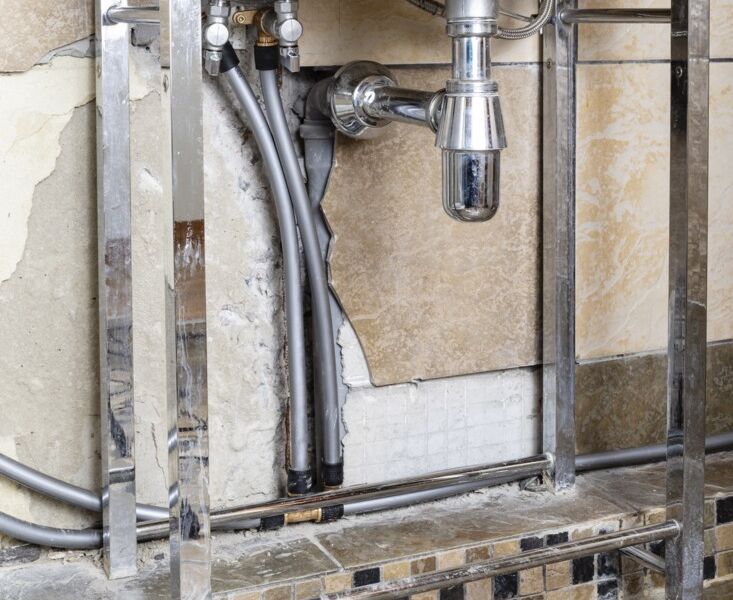
Introduction
Water damage during construction can cause significant issues, including structural damage, mold growth, and costly repairs. It is crucial to take preventive measures during the construction phase to protect your building from water damage. This comprehensive guide will provide you with an in-depth understanding of how to prevent water damage during construction.
1. Proper Planning and Design
Effective water damage prevention starts with proper planning and design. It is essential to consider the location, weather patterns, drainage systems, and building materials during the planning phase. By incorporating strategies that direct water away from the structure, you can minimize the risk of water damage.
2. Waterproofing
One of the key steps in preventing water damage is to implement a waterproofing system. This includes applying waterproofing membranes to below-grade walls, installing drainage systems, and sealing joints and penetrations. Proper waterproofing measures can prevent water from seeping into the building’s foundation and causing damage.

3. Effective Drainage Systems
Installing effective drainage systems is vital in preventing water damage during construction. This includes proper grading around the building, installing gutters and downspouts, and directing rainwater away from the foundation. By keeping the surrounding area free from standing water, you can minimize the risk of water infiltration.
4. Temporary Weatherproofing
During the construction process, it is important to implement temporary weatherproofing measures to protect the building from water damage. This includes using tarps or temporary roof coverings to prevent rainwater from entering the building. Additionally, sealing windows, doors, and other openings can help keep the interior dry.
5. Regular Inspections
Regular inspections are crucial to identify potential sources of water damage during construction. This includes checking for leaks, inspecting the integrity of waterproofing systems, and ensuring proper drainage. Identifying and addressing issues early on can prevent further damage and mitigate potential risks.
6. Construction Site Management
Effective construction site management plays a vital role in preventing water damage. This includes proper storage of building materials to prevent water damage, protecting vulnerable areas during inclement weather, and enforcing strict safety protocols to minimize the risk of accidents that could lead to water damage.
7. Communication and Collaboration
Open communication and collaboration among all stakeholders involved in the construction project are essential in preventing water damage. Architects, engineers, contractors, and subcontractors should work together to implement effective strategies and ensure the proper execution of preventive measures.

8. Emergency Response Plan
Despite preventive measures, unforeseen circumstances can lead to water damage during construction. Having an emergency response plan in place is critical to minimize the impact of water damage and quickly address any issues that may arise. This includes having contact information for emergency water damage restoration services readily available.
9. Training and Education
Providing training and education to construction workers on water damage prevention is essential. This includes educating them on the importance of implementing preventive measures, recognizing signs of potential water damage, and understanding proper construction techniques to minimize the risk of water infiltration.
10. Post-Construction Maintenance
Water damage prevention should extend beyond the construction phase. Implementing regular maintenance routines, including inspecting and maintaining waterproofing systems, draining and cleaning gutters, and addressing any signs of water damage promptly, can help protect the building in the long run.
Conclusion
Preventing water damage during construction is crucial to ensure the safety and integrity of your building. By implementing proper planning, waterproofing, drainage systems, and regular inspections, you can minimize the risk of water damage. Effective construction site management, communication among stakeholders, and training of construction workers also play a vital role in preventing water damage. Remember to have an emergency response plan and prioritize post-construction maintenance to keep your building protected in the long term.
How can I prevent water damage during construction?
What are the consequences of water damage during construction?
Important Facts and Statistics:
- The development of statistics in the exploratory analysis was carried out with pipe breaks between 1995 and …-src:Pipe breaks and estimating the impact of pressure control in water …
- Major environmental stressors, such as earthquakes and tremors, cause the most severe pipe damage for properties along geological fault lines.
- Broken pipes tend to be the symptom of another problem, and that problem will also need to be resolved.-src:Burst & Damaged Pipes: How Leaks Can Cause Water Damage
- A recent study found that the Chicago area is losing 22 billion gallons of treated water per year through leaky pipes.
If you need professional assistance in preventing or mitigating water damage, contact JGW Group Water Damage Restoration Deerfield Beach at 754-294-5716 or visit their website: JGW Group Water Damage Restoration Deerfield Beach.
For more information on water damage prevention and restoration services, you can visit the following pages:



